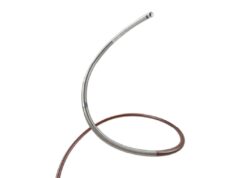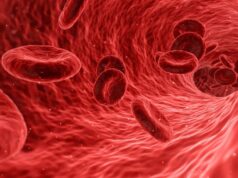 Altering the porosity of coiling in the treatment of cerebral aneurysms has been found to have a greater impact on maximum oscillatory shear index (OSI) among male patients, as compared to their female counterparts. This is the key concluding message of a computational study published in Nature: Scientific Reports.
Altering the porosity of coiling in the treatment of cerebral aneurysms has been found to have a greater impact on maximum oscillatory shear index (OSI) among male patients, as compared to their female counterparts. This is the key concluding message of a computational study published in Nature: Scientific Reports.
“Our results indicate that blood HCT [haematocrit] has limited impact on the growth and rupture of aneurysms, while coiling porosity could decrease OSI and WSS [wall shear stress] about 50% on the aneurysm wall,” lead author Mostafa Barzegar Gerdroodbary (Babol Noshirvani University of Technology, Babol, Iran) and colleagues write.
At the outset of their report, the authors assert that the formation and progress of a cerebral aneurysm is “highly associated” with haemodynamic factors, and, in turn, one of the leading aneurysm treatments—endovascular coiling—also has a meaningful bearing on these factors.
“Although several works have been developed for the haemodynamic study of the bloodstream inside aneurysms, most […] just select superficial aneurysm models for case studies,” they add. “Meanwhile, correct characteristics of bloodstream are also not considered for [these] evaluations.”
For their own research, Barzegar Gerdroodbary and colleagues investigated the haemodynamic features of the blood flow inside a real cerebral aneurysm in the internal carotid artery (ICA) under various temporal conditions, in order to diagnose the main risk factors driving the progress and/or rupture of an aneurysm.
They used a computational fluid dynamic (CFD) method to simulate the bloodstream, and investigate the effects of blood viscosity and coiling porosity, inside the aneurysm. Computer simulations “have been widely used” for the visualisation of biomechanical devices, the authors add, and—due to inaccessibility—this technique is “the best option” for analysing blood haemodynamics. In addition, OSI and WSS of the aneurysm wall were compared within different blood flow stages to determine the high-risk region for rupture of the aneurysm.
According to Barzegar Gerdroodbary and colleagues, their comparison of the average WSS on the aneurysm wall at different timepoints “clearly demonstrates” how the rate of blood flow impacts the growth and rupture of a cerebral aneurysm.
“It is found that the maximum average WSS happens at the neck of the aneurysm sac,” they write. “The change of the WSS also indicates that the region with high curvature has maximum wall shear stress.”
Among other findings the authors report is that the observed pressure on the aneurysm wall indicates that the angle of blood direction—relative to the inlet of the sac—is “highly important” for the creation of a high-pressure region on the sac wall. And, according to their results, the rate of blood flow plays a “main role” in determining the shape of the aneurysm close to the neck.
Distribution of WSS figures for different coiling porosities (0.79 and 0.89) confirms that the effects of blood flow on the aneurysm wall declines when the porosity of the coiling is increased. However, as per an analysis of different blood HCTs (0.35 and 0.45), the impact of blood viscosity on WSS distribution at the aneurysm wall “is not substantial”.
Barzegar Gerdroodbary and colleagues’ study also involved a quantitative comparison intended to elucidate the effects of coiling and blood HCT on the maximum WSS value at the aneurysm wall.
“As expected, maximum value of WSS happens in peak systolic, where the effects of coiling are more visible than HCT,” they detail. “In maximum acceleration and deceleration instances, the effects of blood HCT is about 8.5%, and [we] found that WSS of female patients (HCT=0.35) is always lower than that of males (HCT=0.45).
“Quantitative comparisons of the maximum OSI also confirm the role of porosity on the reduction of the WSS in different time stages. In high HCT (0.45), changing the porosity of coiling from 0.89, [compared] with 0.79, would decline maximum OSI up to 75% (in maximum acceleration). However, this effect is limited to about 45% for the low HCT (0.35).”
Lastly, further comparison of blood haemodynamics suggested that lower coiling porosity—equivalent to higher permeability—“considerably limited” blood inflow into the aneurysm sac, while blood viscosity had no significant impact here. In addition, flow stream comparisons showed that the pressure of incoming blood entering the aneurysm decreases in male patients (HCT=0.45) compared to females.










